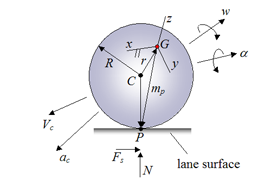 Whenever you're at an AMF bowling alley for a birthday or work party, you're probably far too busy having fun to think about boring things like science and physics!
Whenever you're at an AMF bowling alley for a birthday or work party, you're probably far too busy having fun to think about boring things like science and physics!
However, tenpin bowling is a deceptively intricate sport (yes, it is a sport) that involves a lot of calculated physics and technique.
The best bowling league pros don't just throw those balls and hope they get lucky. There is a scientific method behind the consistent strikes they get, which is perfected through years of practice.
So what are some of the scientific principles behind tenpin bowling?
Having a ball
The ball is, unsurprisingly, the most important piece of equipment in tenpin bowling, so it's important to appreciate just what role it plays in the physics of the game.
Bowling balls are just huge orbs of heavy polyurethane - they have a special solid core inside them that provides the spin and momentum to achieve the optimum trajectory down the lane.
Different balls have differently shaped cores to adapt to the individual bowler's unique style. Even the location of the drilled finger holes can have an impact on performance!
You might not be able to cut open a bowling to find out for yourself what the core looks like, but it's definitely inside there, playing a massive part in how the ball spins down the lane.
It's all about the angle
You might have the best bowling ball on the market - but that doesn't instantly make you a pro!
As with any other sport, it's mostly about the individual player's technique, and the angle at which you release the ball is one of the most important factors in your performance.
For example, according to Tenpin Bowling Australia, the best angle for entry for achieving a strike is 6 to 7 degrees. That's a pretty small deviation, and even the smallest of deviations can result in your throw being too weak or hard!
So now you're up to speed on the science behind bowling. Why not head down to an AMF to show off your new-found knowledge?